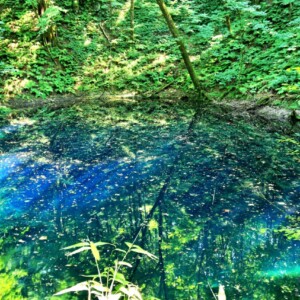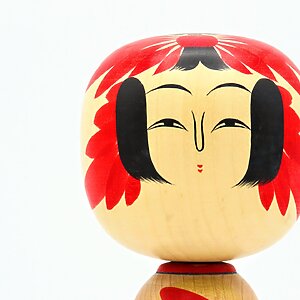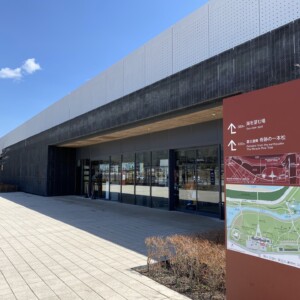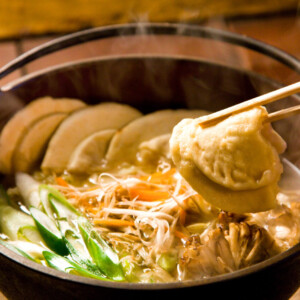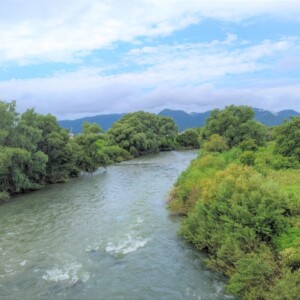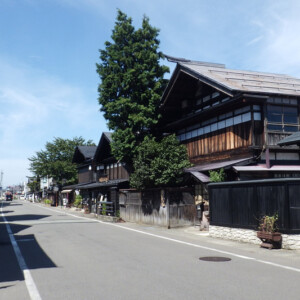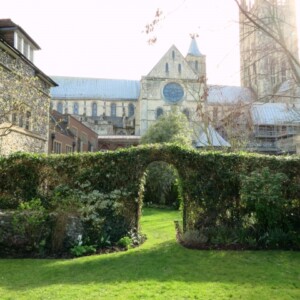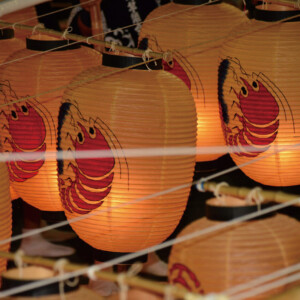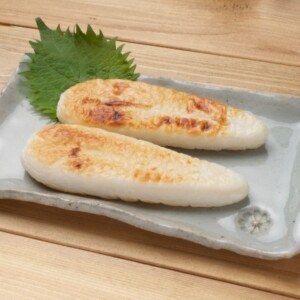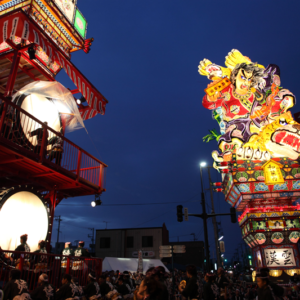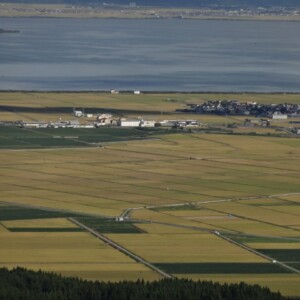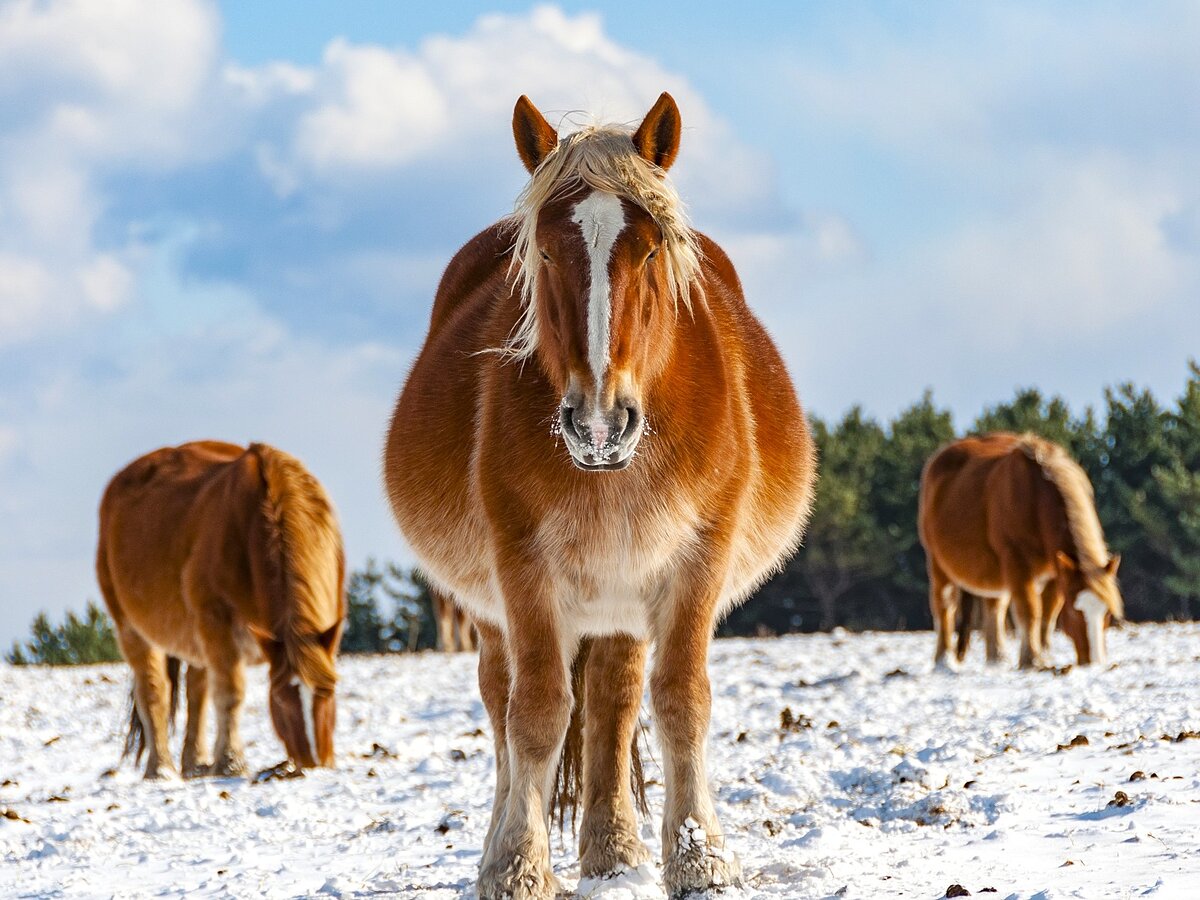
Cold horses graze at the feet of Shiriyazaki Lighthouse, the northernmost point of Honshu [Higashidori Village, Aomori Prefecture]
table of contents
- 1 The small but powerful "Kandachiuma"
- 2 Grazing temporarily suspended due to trouble with tourists
- 3 Minamoto no Yoshitsune's favorite horse was the "Nambu horse"
- 4 The Nanbu clan improved the Nanbu horse to be an excellent military horse
- 5 The "Kandachiuma" was a farm horse developed from the military horse Tanabe
- 6 Shiriyazaki Lighthouse protects maritime traffic in the Tsugaru Strait
The Kandachime horse is a horse, and is raised on a pasture in Shiriyazaki/Higashidori Village, Aomori Prefecture, at the eastern end of the Shimokita Peninsula in Aomori Prefecture, facing the Pacific Ocean and the Tsugaru Strait .
Shiriyazaki Lighthouse, the northernmost point of Honshu , which is also designated as a national tangible cultural property, and the picturesque scenery has become a popular tourist spot on the Shimokita Peninsula.
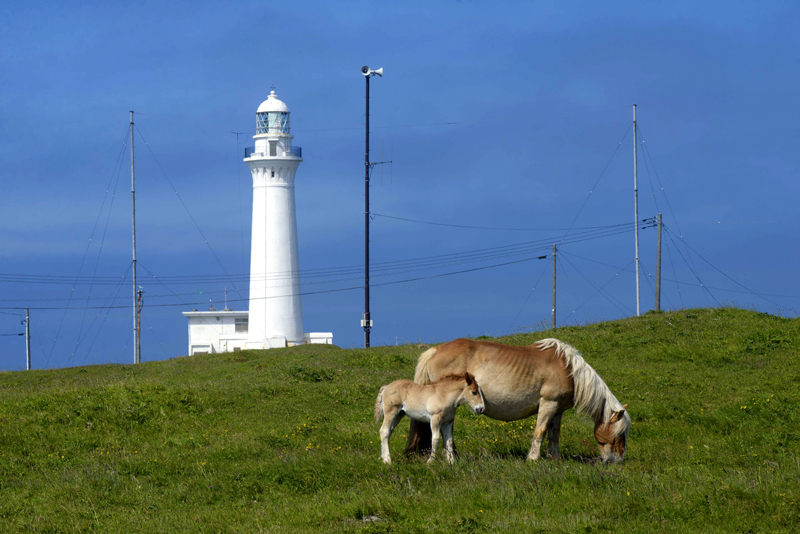
The small but powerful "Kandachiuma"
The Kantachi horse is descended from the Nanbu horse, a native Japanese horse whose purebred is no longer in existence. Although it is small, it has strong legs and a sturdy build that makes it look like it would be good at doing heavy work rather than running fast
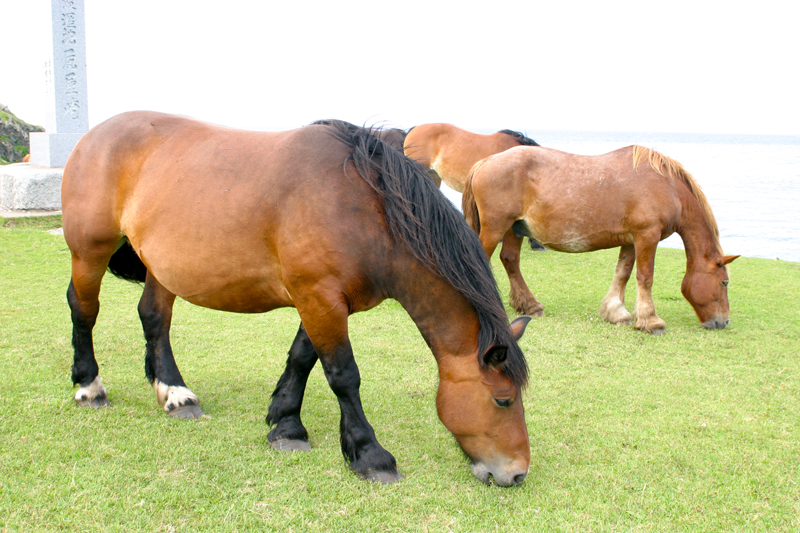
The ancestors of these horses were originally native Japanese horses known as "Nambu horses," and they have been grazing in this area since the Edo period

The horses first became known in 1970 when Tsutomu Iwasa, the principal of the local Shiriya Elementary and Junior High School, wrote the following poem at the first calligraphy gathering: "In the morning clouds, the cold-settled horses neigh bravely, perhaps a storm on Chikushigahara."
Since then, they have come to be known as "Kandachiuma" and have become known throughout the country. "Kandachiuma" refers to the image of horses standing in a pasture covered in snow, facing the strong cold wind
Grazing temporarily suspended due to trouble with tourists
As of 2022, there are 11 parent horses and 6 foals of the "Kandachiuma" breed. Horses were originally bred for heavy labor such as farming or for military purposes, but in modern times they are not used for farming or other purposes at all, except for horse racing and meat
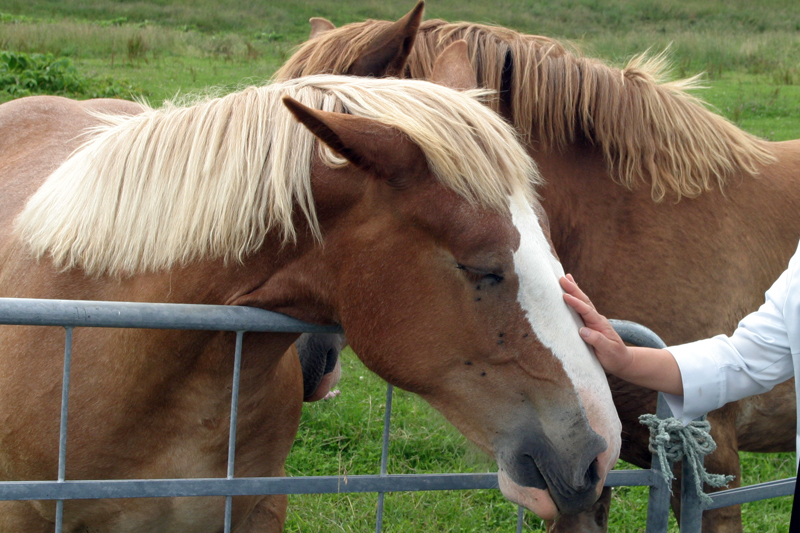
The Kantachi horse was no exception, and by 1991 (Heisei 3), its numbers had dropped to just nine. Since then, local governments and other organizations have stepped up conservation efforts to prevent extinction, and by around 2020 (Reiwa 2), the number had recovered to over 30. Unfortunately, around that time, there was an increase in accidents involving tourists being kicked or bitten by the horses while they were grazing, and the management association was forced to move them to an enclosed pasture
Yomiuri Shimbun article from May 15, 2022: https://www.yomiuri.co.jp/national/20220515-OYT1T50003/
Because the pasture is not as large as the plateau, the horses cannot be kept in a good environment without limiting the number of horses kept, so some of the horses are entrusted to farmers or privately owned. It may appear that the number of "Kantachi Horses" has decreased, but this is simply because the number of horses available for viewing has decreased. Most accidents are caused by tourists, but if improvements are made to prevent accidents, the horses will be allowed to graze as before
In addition, the cows are not allowed to graze on the plateau where the lighthouse is located in winter. They spend the winter in a pasture called "Ataka" a short distance away
Minamoto no Yoshitsune's favorite horse was the "Nambu horse"
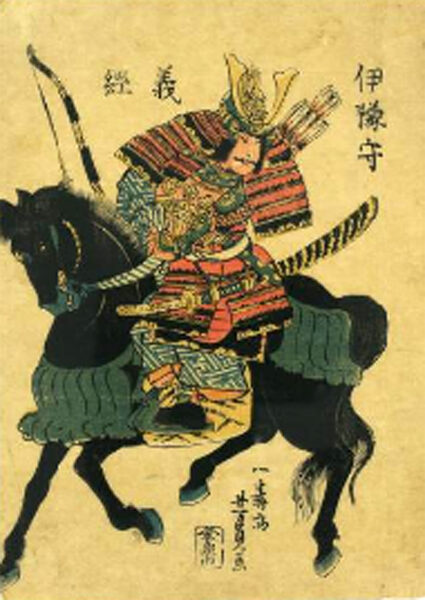
The existence of the Nanbu horse, the ancestor of the Kantachi horse, has been recorded in ancient documents since the Nara period. At that time, the area north of the Tohoku region, known as Emishi,
The Imperial Court appointed Sakanoue no Tamuramaro as Shogun (General of the Expeditionary Forces), who repeatedly dispatched armies to conquer the Emishi, bringing horses from those regions back to the capitals of Nara and Kyoto. Compared to the horses native to southern regions such as Kyushu that were in the capital at the time, these horses were larger in size, more beautiful in appearance and shape, and had better temperaments, so "Obuchi no Koma" (Tail Horses) and were the object of admiration among the nobility.
, the beloved horse of Minamoto no Yoshitsune, which he rode in the Battle of Ichinotani and other battles, is also said to be a tail horse.
The Nanbu clan improved the Nanbu horse to be an excellent military horse
After the Nanbu clan began to rule what is now Iwate Prefecture and the eastern part of Aomori Prefecture, they built ranches for the domain and worked to improve horses, producing excellent military horses
Farmers also "curved houses" and took in military horses instead of farm horses, raising them carefully and contributing to the improvement of horses.
The Edo Shogunate also considered horses to be an important military force, and the third shogun, Tokugawa Iemitsu, and the eighth shogun, Tokugawa Yoshimune, entrusted Persian horses (Arab breed) to the Nanbu clan, and the "Nambu horses" continued to be improved as military horses.
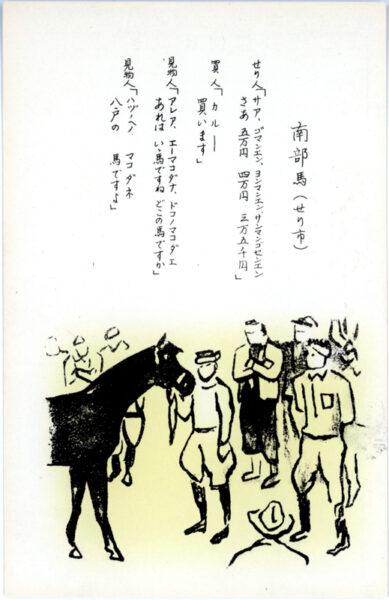
Even after the Meiji period, the Nanbu horses were crossbred with foreign horses for military purposes, and some horses were born that were fast enough to be used as racing horses, but the pure Nanbu horse bloodline was lost
The "Kandachiuma" was a farm horse developed from the military horse Tanabe
On the Shimokita Peninsula, there was a type of military horse called the "Tanabu horse," which was improved by crossbreeding with horses from Mongolia and Russia .
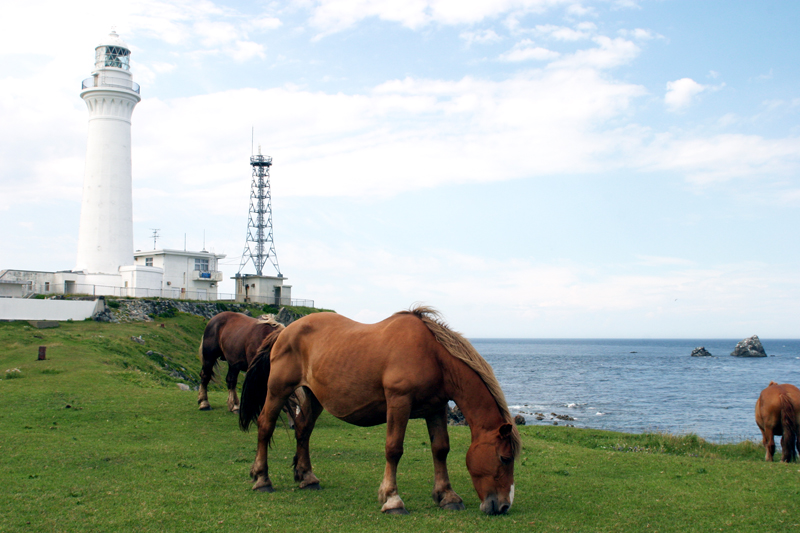
In the Shiriya area, the Tanabe horse was crossbred with the Breton, a large meat breed native to France, and bred for farming and meat purposes. This resulted in the Kandachi horse
The "Kandachi Horse" is not a wild horse. It is a precious horse with the bloodline of the "Nambu Horse" and is carefully protected and raised by Higashidori Village and other areas. The "Kandachi Horse" has been designated as a natural monument of Aomori Prefecture
Kantateuma winter pasture land Ataka <Information>
- Name: Kantateuma wintering pasture land Ataka
- Address: Shiriya district, Higashitori village, Shimokita district, Aomori prefecture
- Phone number: 0175-47-2115 (Higashidōri Village Industrial Promotion Corporation)
Google Map
Shiriyazaki Lighthouse protects maritime traffic in the Tsugaru Strait
the tallest brick lighthouse in Japan , and was first lit in 1876 (Meiji 9) .
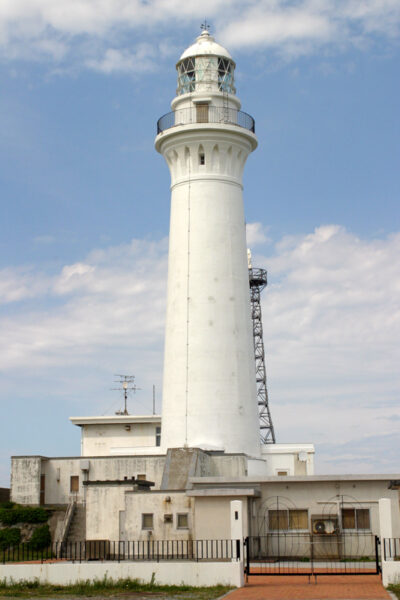
At approximately 33 meters tall, it was the first Western-style lighthouse in the Tohoku region of Japan. Cape Shiriya is a difficult spot for maritime traffic due to the complex ocean currents where the Tsugaru Strait meets the Pacific Ocean, and is an area prone to dense fog, so it was the first place in Japan to have a foghorn installed.
Furthermore, in 1901 (Meiji 34), Japan's first electric arc lamp was installed , boasting exceptional brightness for the Meiji era. It is also recorded as the only lighthouse in Japan to have been hit by a meteorite
The Shiriyazaki Lighthouse is a nationally registered tangible cultural property , and has been certified as a Heritage of Industrial Modernization and a Civil Engineering Heritage Site recommended by the Japan Society of Civil Engineers. You can tour the interior.
Shiriyazaki Lighthouse <Information>
- Name: Shiriyazaki Lighthouse
- Address: 1-1 Shiriyazaki, Shiriya, Higashitori Village, Shimokita District, Aomori Prefecture
- Phone number: 0175-47-288
- Closed: Early November to late April
- Admission donation: Junior high school students and above: 300 yen
- URL: Shiriyazaki Lighthouse (Lighthouse homepage)
Google Map
Higashidori Village <Information>
- Contact: Higashidori Village Commerce and Tourism Group
- Phone number: 0175-27-2111
- URL: Higashidōri Village Commerce and Tourism Group (Higashidōri Village website)




![[Shimokita Peninsula, Aomori Prefecture] Geopark Shimokita Peninsula. A rich hot spring springs from the northernmost peninsula of Honshu 24734759_m](https://jp.neft.asia/wp-content/uploads/2023/02/24734759_m-150x150.jpg)
!["Spirited Salmon" that grew up in the Tsugaru Strait is the best canned gourmet food [Muts City, Aomori Prefecture] 豬akibug。繧繧繝シ繝 『繝ウ01](https://jp.neft.asia/wp-content/uploads/2022/10/73e88a0a27d5e103d3c0e4705770f5de-150x150.jpg)

![Hachiman Horse - A lucky local toy that is one of Japan's three major pieces and is passed down in the southern horse production area [Hachinohe City, Aomori Prefecture] Hachimanma IC](https://jp.neft.asia/wp-content/uploads/2025/03/IMG_1700-150x150.jpg)

